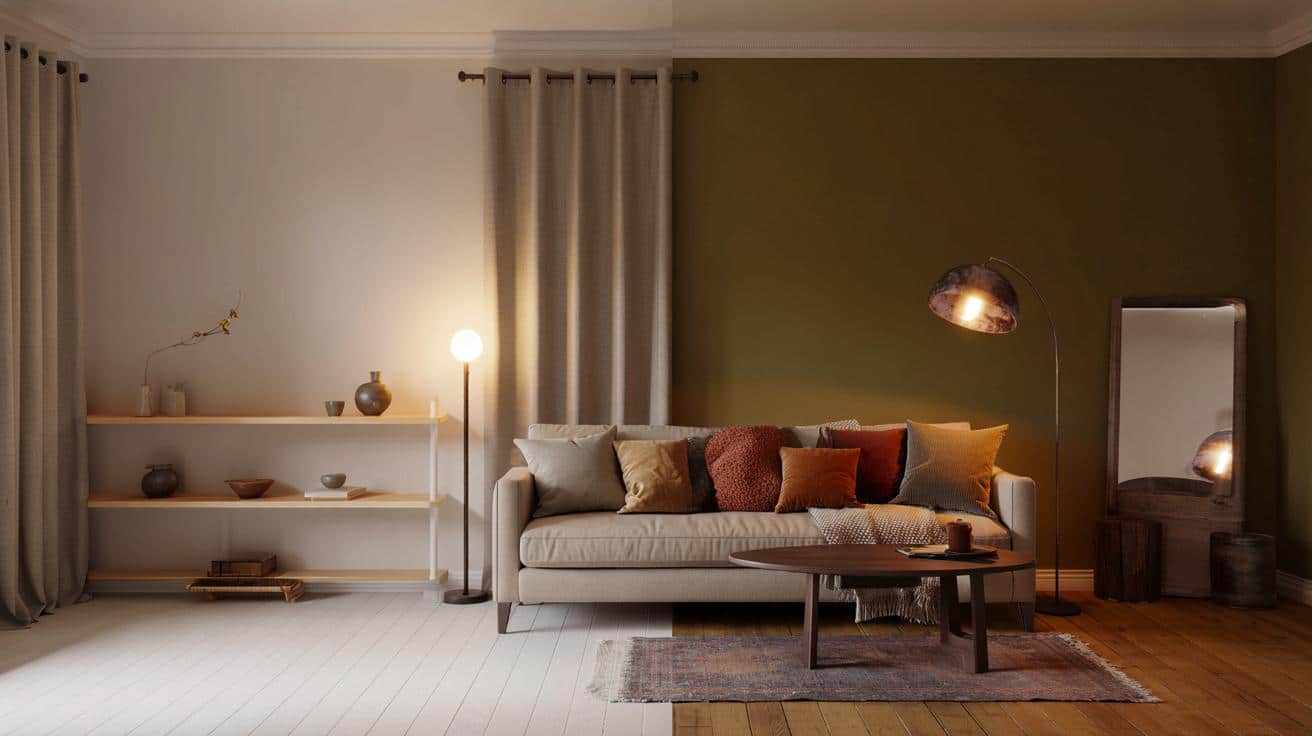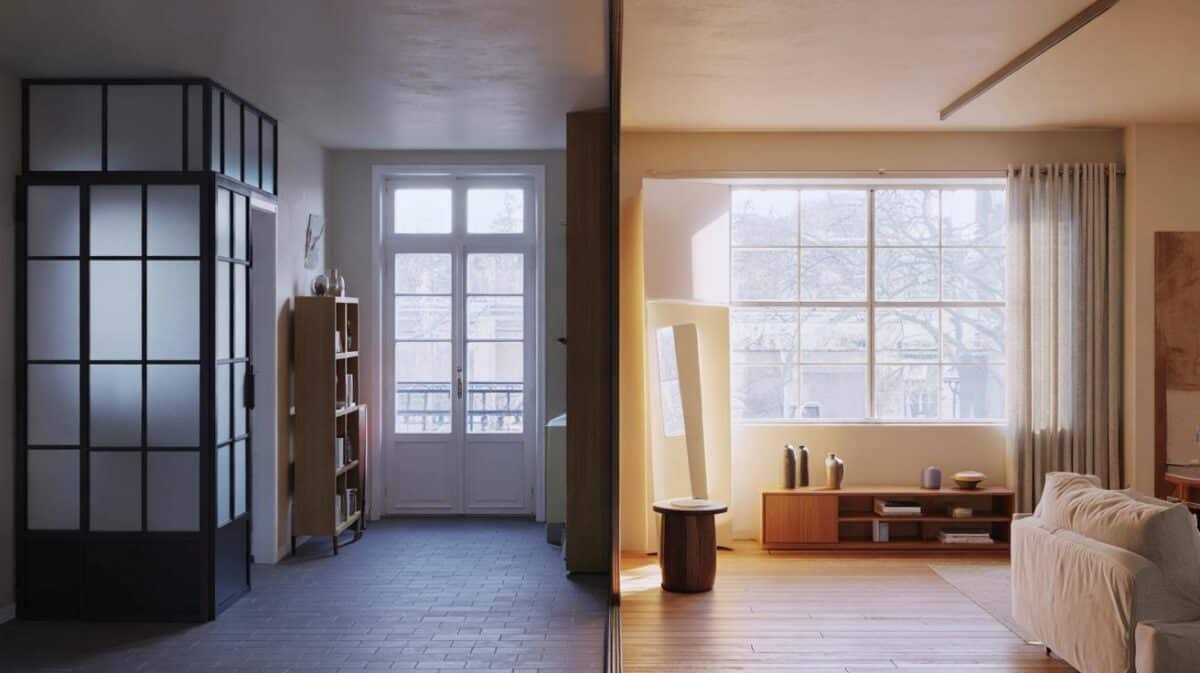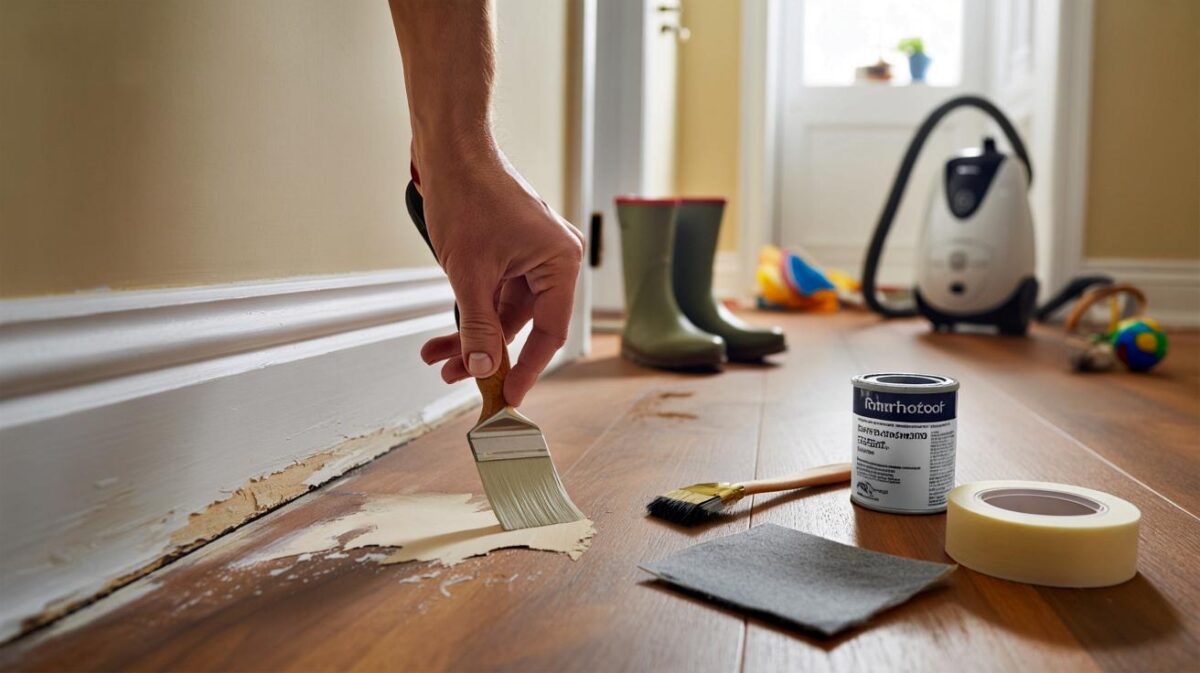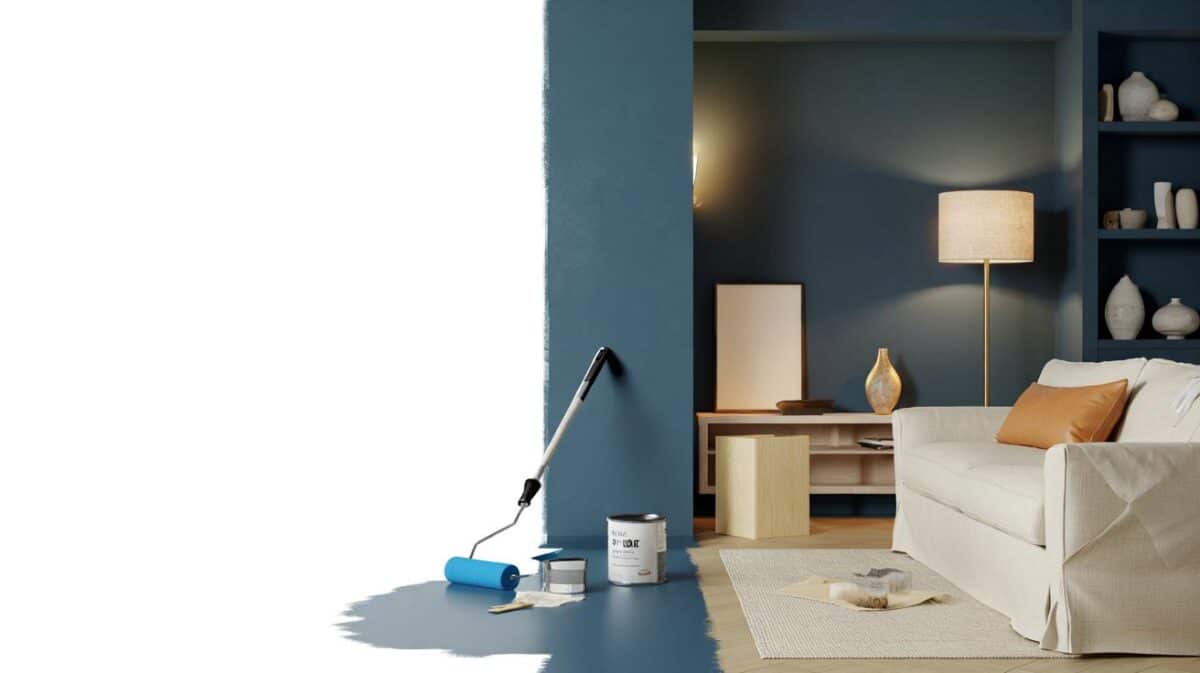People now crave warmth, story and bold colour.
Designers across Europe say the white-and-wood formula finally looks tired. You do not need a full refit to move on. A few targeted swaps can add depth, mood and texture before winter lands.
Why Nordic minimalism feels tired in 2025
From calm to copy‑paste: how the look saturated homes
The Scandinavian promise—light, clarity, and simple lines—reshaped city flats for a decade. Retailers made it easy, cheap and repeatable. The effect spread to rentals, cafés and offices. Familiarity arrived fast. So did the sense of sameness.
As nights draw in, pale floors and bleached woods can read flat. Open shelving exposes more emptiness than personality. The neutral palette shows every scuff. Many households now want rooms that feel lived‑in, not staged.
Seasonal mood: why pale palettes read cold now
Autumn alters how we read space. Low sun and early dusk drain cool greys. Off‑white walls turn chalky. Bare bulbs feel harsh. People ask for softer edges, richer tones and layered light. Texture matters more than ever.
Designers report a pivot from “more blank space” to “more belonging.” Colour, craft and curvature lead that shift.
The new obsession for 2025: warmth, craft and colour
Materials and shades leading the charge
Expect deeper greens, tobacco, oxblood and peacock blue on feature walls and textiles. Darker timber—walnut, smoked oak, wenge—anchors rooms. Curved silhouettes in sofas and lamps relax the geometry. Hand‑touched finishes replace factory‑flat surfaces.
- Corduroy and bouclé bring tactility to sofas and armchairs.
- Heavier curtains trap heat and frame windows with theatre.
- Handmade ceramics add irregular glaze and honest weight.
- Rugs with pile—Berber, Persian, or jute‑wool blends—soften acoustics.
- Lacquered or aged brass lamps introduce glow without glare.
Every piece should earn its spot. If it is new, let the colour sing. If it is old, let the patina tell its story. People mix high street basics with vintage finds and small‑batch craft to escape the catalogue feel.
Maximalism, craft and vintage: mixing with intent
Maximalism returns, but with edits. Layer patterns, not clutter. Repeat a hue across three surfaces to bind the scheme. Balance ornate textiles with solid, grounded furniture. Bring in one bold artwork, then support it with quieter textures around it.
The sweet spot in 2025: character you can touch, colour you can live with, and pieces that could have a past.
Quick wins if you feel stuck with pale wood and white walls
A reset does not require a skip or a painter’s week off. Set a budget, pick a palette, and change the items that set mood first: light, textiles, and anchors.
| Swap | Typical cost | Time | Impact (1–5) |
|---|---|---|---|
| Two cushion covers in corduroy or velvet | £35–£60 | 10 minutes | 3 |
| Floor lamp with curved shade, aged brass or coloured glass | £60–£120 | 15 minutes | 4 |
| Vintage wool rug (160×230cm) in muted reds or indigo | £120–£300 | 5 minutes to lay | 5 |
| Dark wood side table to ground a pale sofa | £70–£150 | Instant | 3 |
| Full‑length curtains in heavy linen blend | £90–£180 per pair | 1 hour | 4 |
| Large mirror with aged frame opposite a window | £80–£200 | 30 minutes | 4 |
How to pivot without dumping what you own
Keep the best of Scandinavian, ditch the uniformity
Keep the solid oak table and the simple sideboard. They carry clean lines and longevity. Add depth around them. Pair light wood with dark leather. Put a carved side chair next to a sleek sofa. A neutral sofa loves a patterned throw and a coloured lamp.
Colour rules that work in small UK homes
- Use one deep shade (olive, aubergine or petrol) on a single wall to create a backdrop.
- Repeat that shade twice more—in a cushion and a vase—to make it deliberate.
- Balance with warm neutrals: taupe, clay, mushroom, not stark white.
- Add one hit of brass or smoked glass per room to warm the light.
- Let at least one natural texture stay raw: linen, rattan, cork or terracotta.
What decorators say people get wrong
Common pitfalls to avoid
- Buying sets. A room built from matching ranges feels like a showroom. Mix eras and finishes.
- Ignoring scale. Big rooms need big lampshades and bold rugs. Small pieces make them look mean.
- Overdoing pattern. Start with one hero motif and echo its colours elsewhere, not its shapes.
- Flat lighting. Combine a ceiling lamp with two warm pools of task or accent light.
- Too many pale woods. Introduce one dark anchor to ground the palette.
Where the money goes—and where to save
Spend where you touch, save where you look
Invest in items you touch daily: sofa fabric, dining chairs, door handles. Choose robust textures that age well. Save on art frames, cushion inners and side tables. A £35 lampshade can shift the whole mood. A £12 tester pot can change how your oak looks against the wall.
If you love minimalism, keep it—just warm it up
Simple moves for a richer, calmer minimal look
Stay with clean lines if that suits you. Add curve to one piece, like a drum side table. Use off‑white with a red undertone rather than pure white. Swap chrome for bronze. Bring in a wool throw with a whipstitch edge. You keep the order, but gain softness.
Extra ideas you can try this weekend
A 30‑minute room audit
- Stand at the doorway. Note the coldest corner and the brightest wall.
- Move a lamp to the cold corner and angle it towards texture.
- Group small objects by colour to reduce visual noise.
- Remove one item from every surface, then add one item with a story.
Sample a palette before you commit
Paint A4 sheets with two deep colours and one warm neutral. Tape them to the wall for 48 hours. Check them at 8am, 1pm and 7pm. Choose the one that holds its mood in dim light. That shade will carry you through winter evenings.
Maximalism without the mess
Work in layers, not piles. Start with a calm base rug. Add a patterned kilim on top in the seating zone only. Repeat one colour from the kilim in a cushion and a book spine. If it feels busy, remove the smallest layer first. You control the volume.
You do not need to abandon everything Nordic. Keep the craft, lose the copy‑paste, and turn up the warmth.
Curious about materials? Try a touch test. If a surface feels cold and flat, pair it with something fibrous or matte. If a piece looks light and airy, add one heavier neighbour. If a colour feels timid, repeat it. If it shouts, ground it with timber or blackened metal. These small decisions build rooms that hold attention and comfort through 2025 and beyond.








